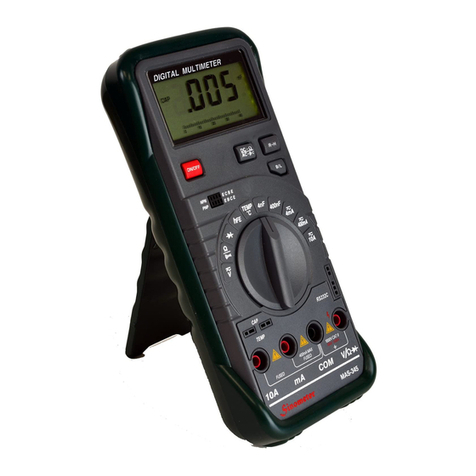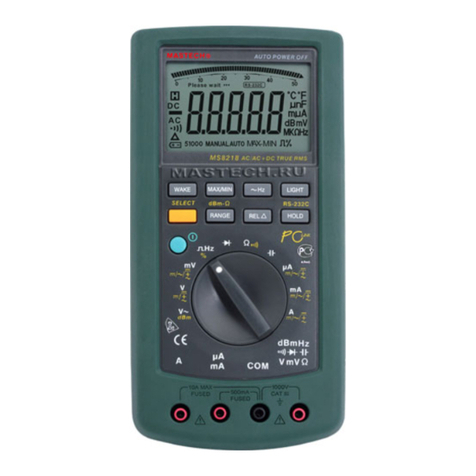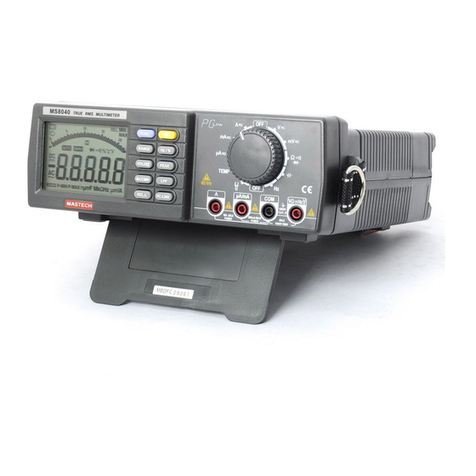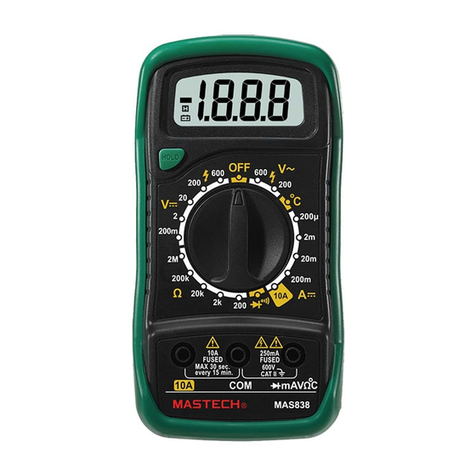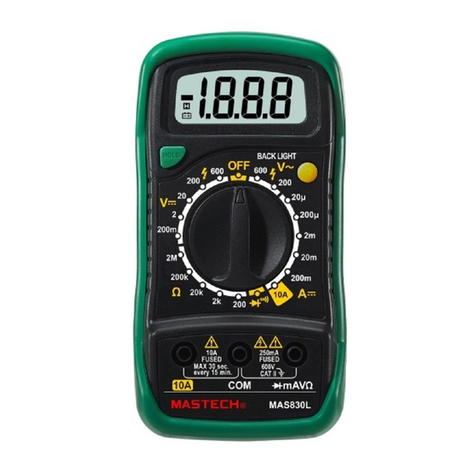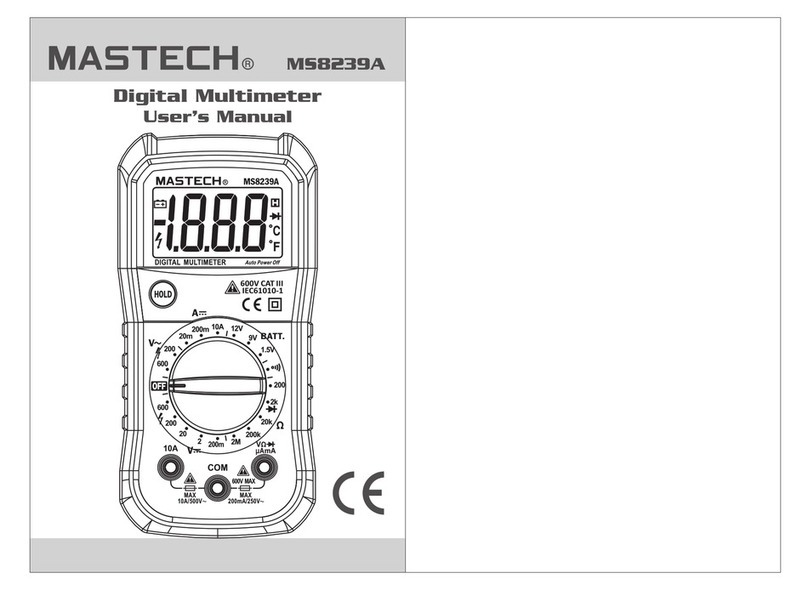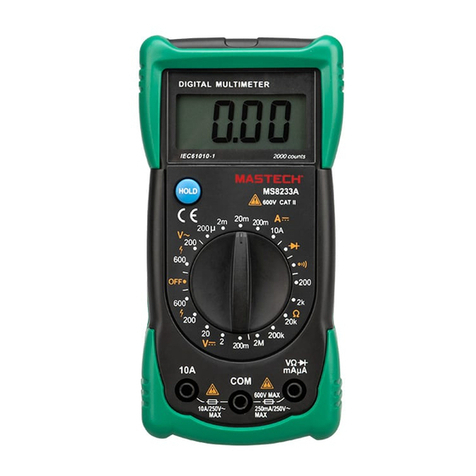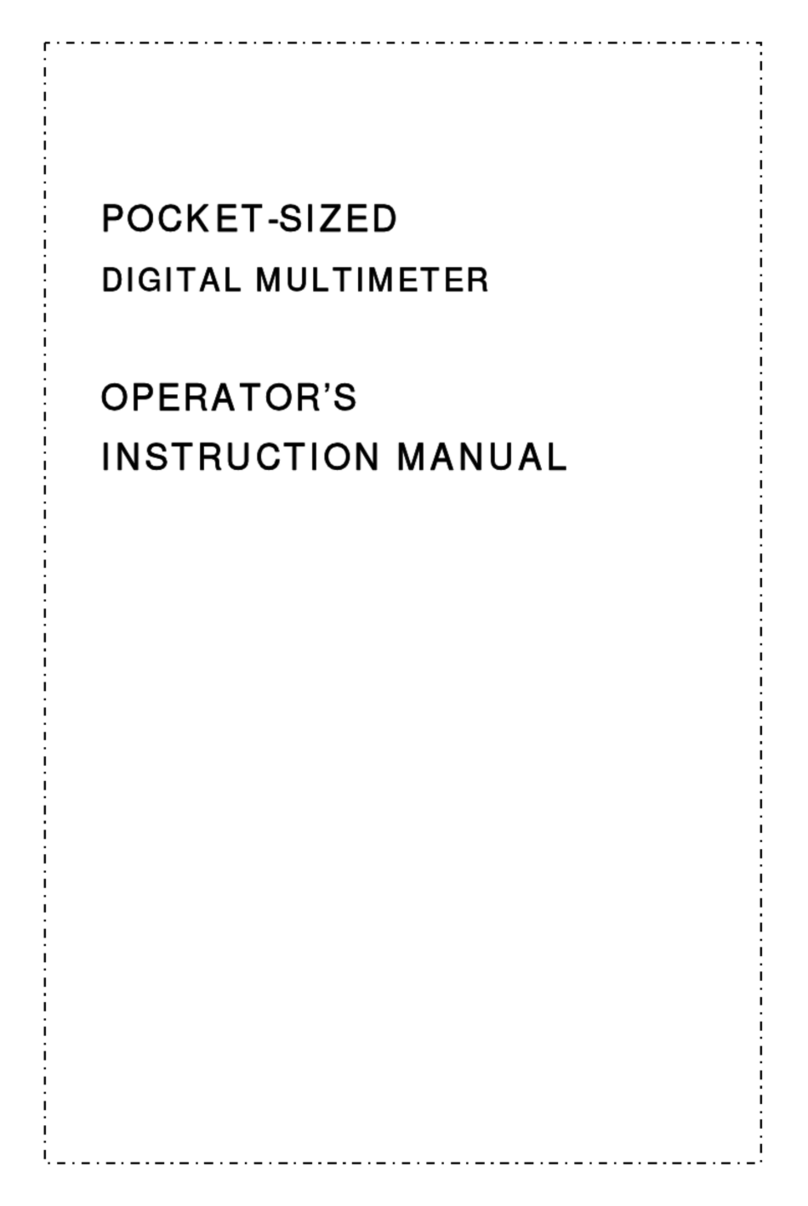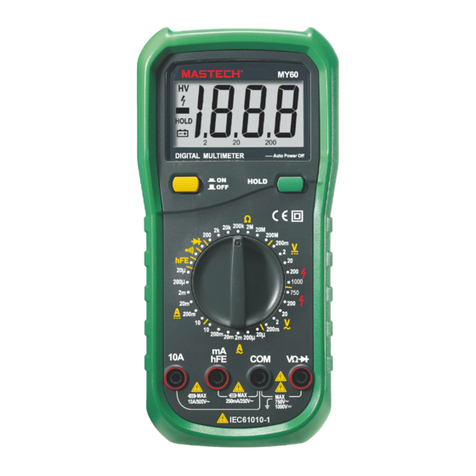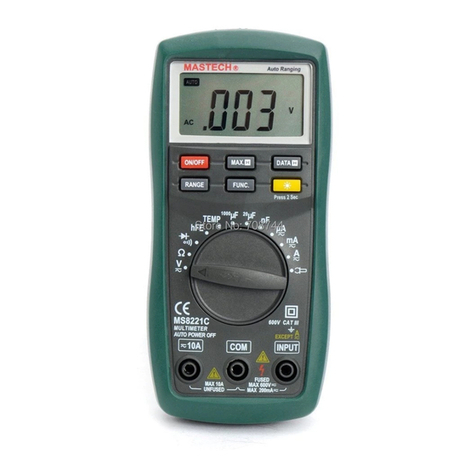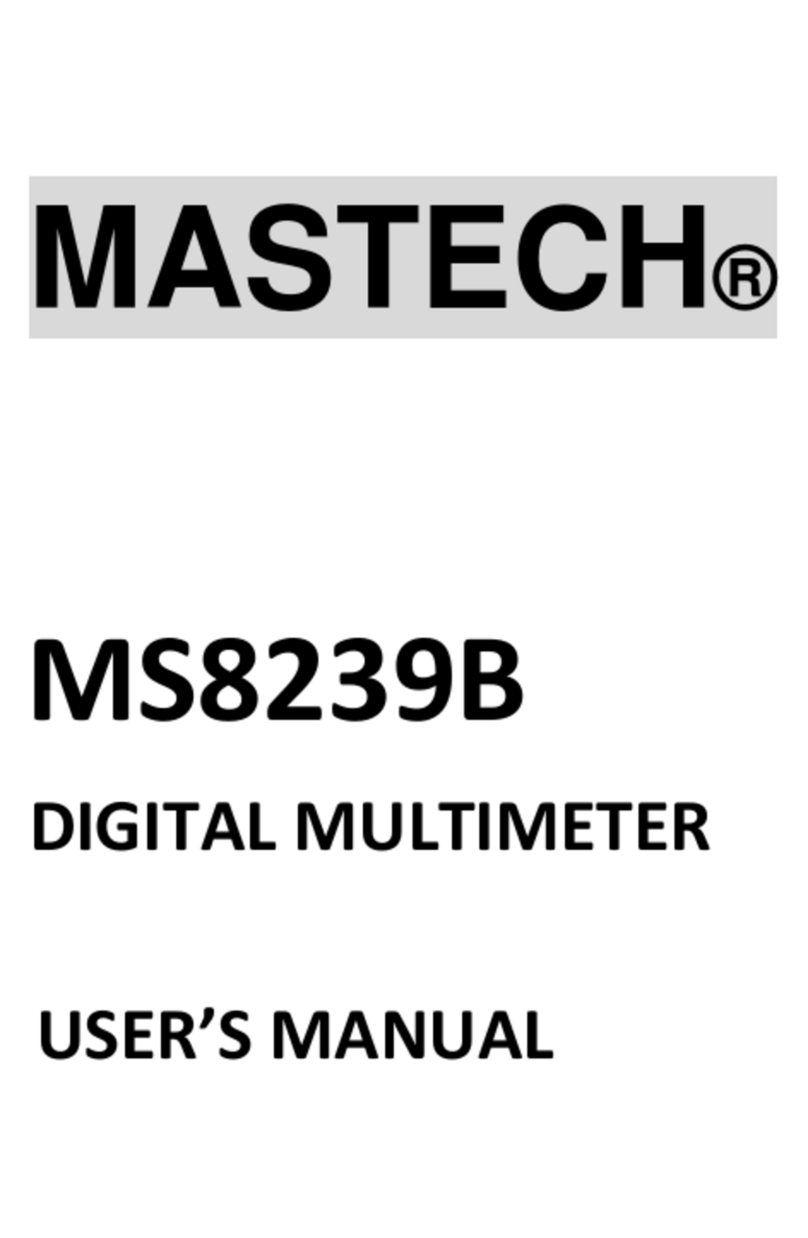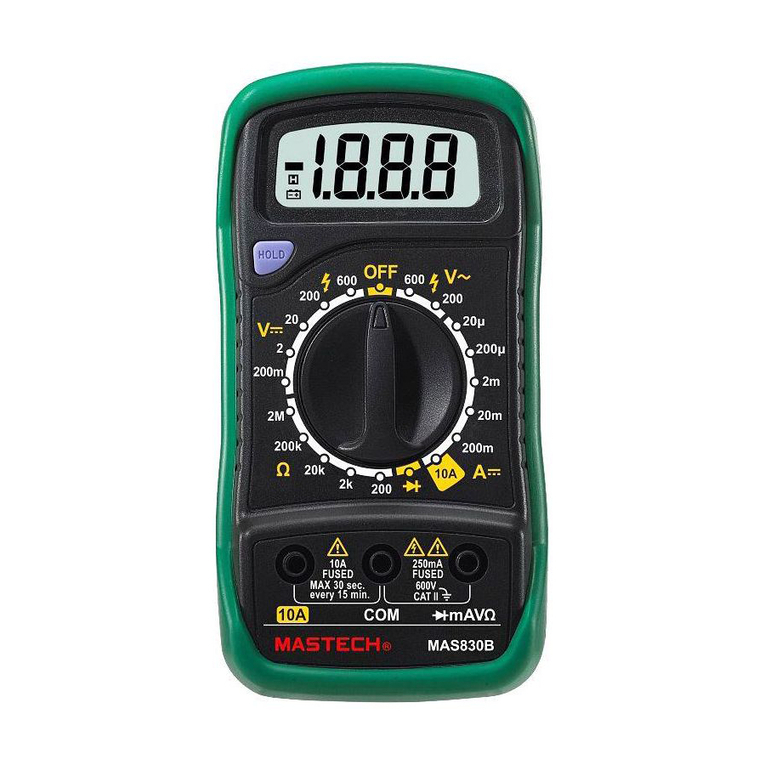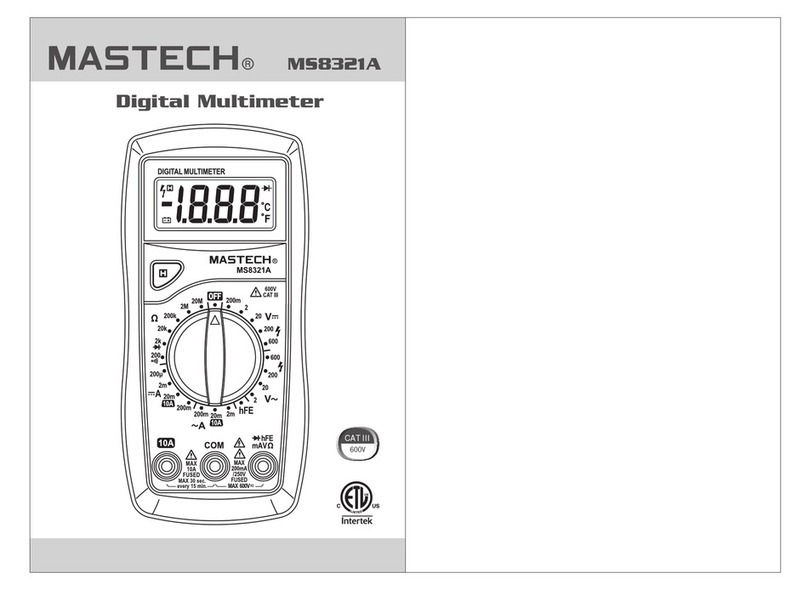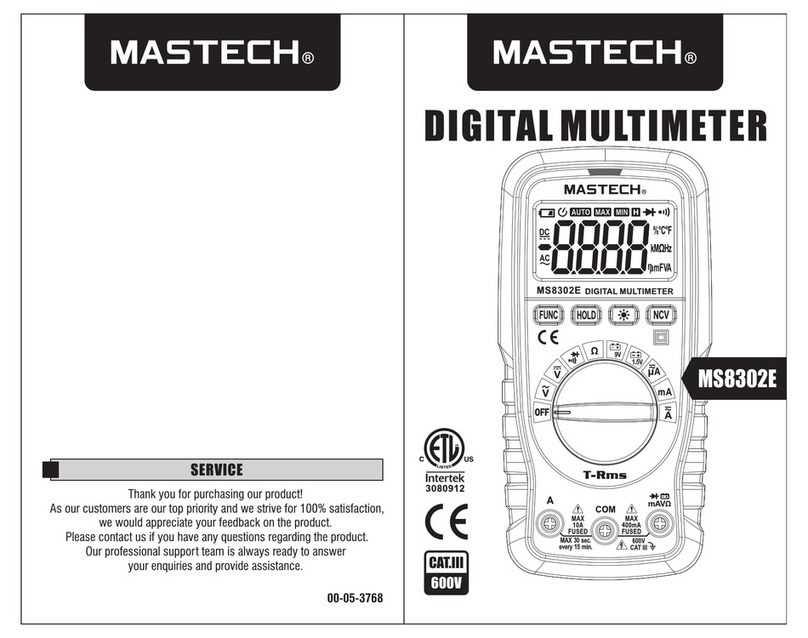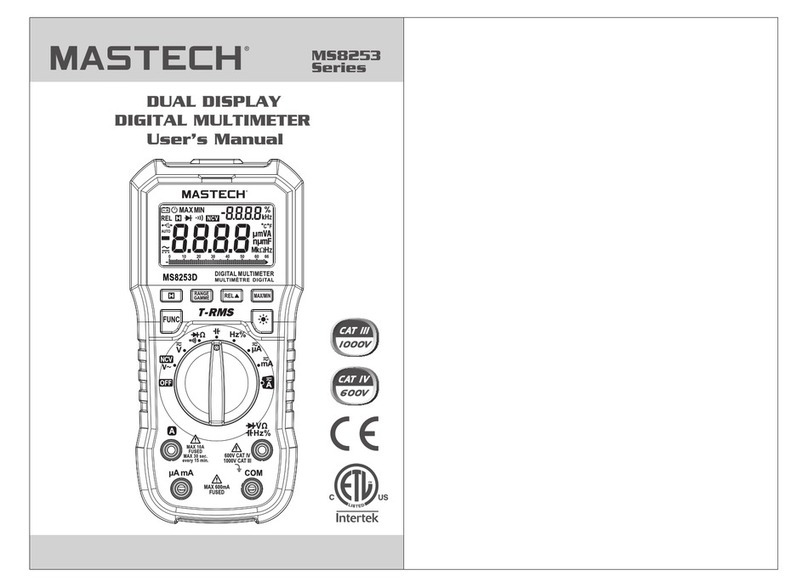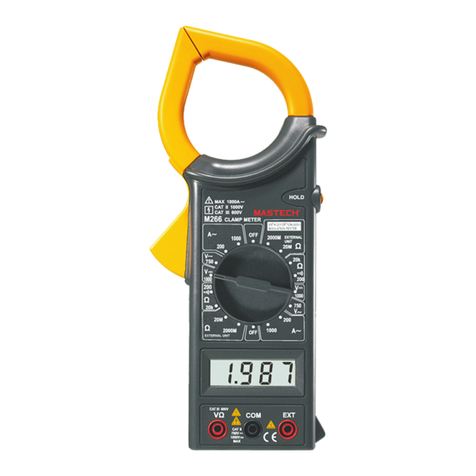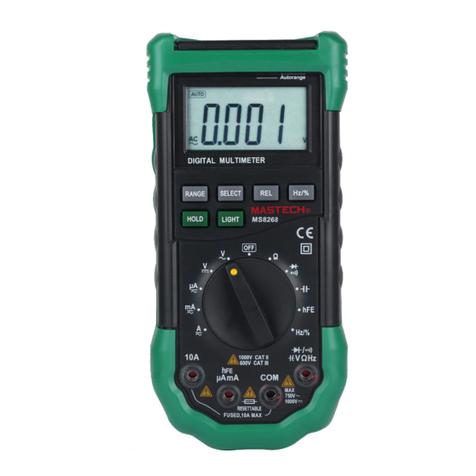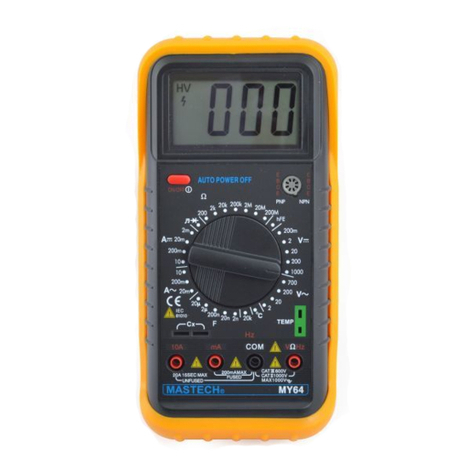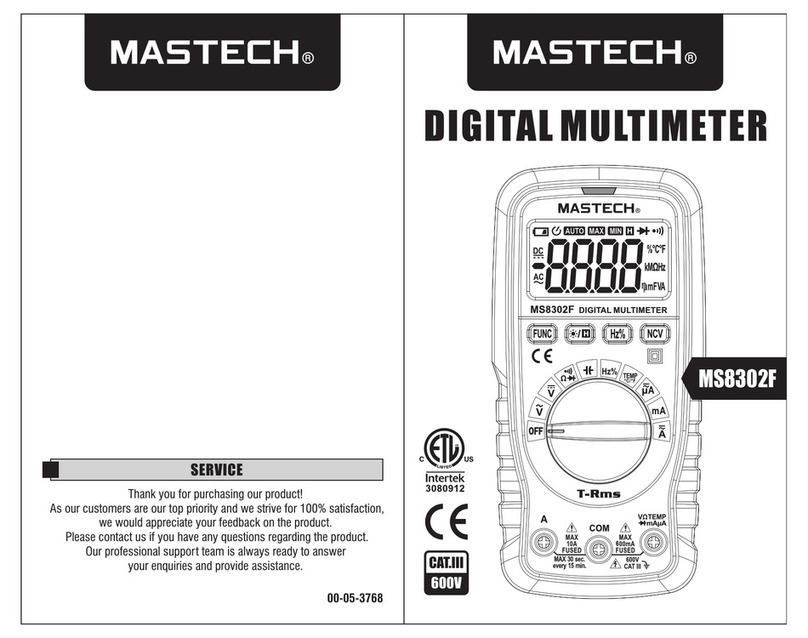
1. Safety standards
The multimeter meets the following safety standards:
EN/UL/CSASTD C22.2 NO. 61010-1,61010-2-030,
61010-2-033for electronic testing instruments. This meter
meets CAT III 600V installations and a pollution degree of 2.
• The protection provided by the meter can only be ensured if all
safety procedures are strictly followed.
• The safety symbols on the meter are to advise of potential
dangerous situations. Caution is required when measuring
close to the meter’s safety limits.
• Never exceed the protection limit values indicated in the
specifications for each range of measurement.
The special attention should be paid when using the meter
because the improper usage may cause electric shock and
damage the meter. The safety measures in common safety
regulations and operating instruction should be complied
with when using. In order to make fully use of its functions
and ensure safe operations please comply with the usage in
this section carefully.
WARNING
1.1 FCC Statement
This device complies with part 15 of the FCC Rules.
Operation is subject to the following two conditions: (1) This
device may not cause harmful interference, and (2) this
device must accept any interference received, including
interference that may cause undesired operation.
This equipment has been tested and found to comply with the
limits for a Class B digital device, pursuant to part 15 of the
FCC Rules. These limits are designed to provide reasonable
protection against harmful interference in a residential
installation. This equipment generates, uses and can radiate
radio frequency energy and, if not installed and used in
accordance with the instructions, may cause harmful
interference to radio communications. However, there is no
guarantee that interference will not occur in a particular
installation. If this equipment does cause harmful interference
to radio or television reception, which can be determined by
turning the equipment off and on, the user is encouraged
to try to correct the interference by one or more of the
following measures:
- Reorient or relocate the receiving antenna.
- Increase the separation between the equipment and receiver.
- Connect the equipment into an outlet on a circuit different
from that to which the receiver is connected.
- Consult the dealer or an experienced radio/TV technician
for help.
Caution:
Any changes or modifications not expressly approved by the
party responsible for compliance could void the user's
authority to operate the equipment.

